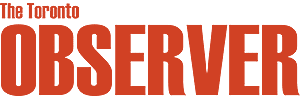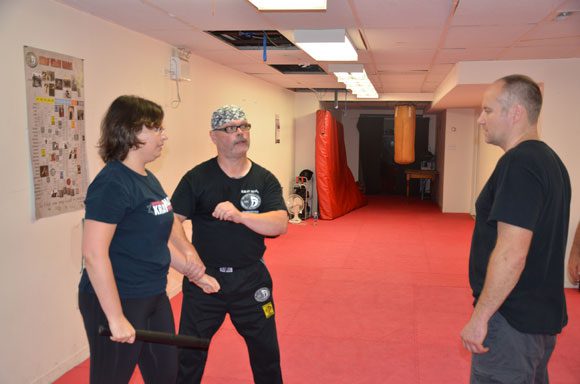“One may walk in peace” is the mission statement of krav maga.
Being a martial art that traces its roots to hatred, this is only natural.
It was created by Imi Lichtenfeld, a Jew who came across street violence and anti-Semitism in 1930s Bratislava, Czechoslovakia. Lichtenfeld would bring krav maga to Israel at the state’s founding in 1948, and it’s still used by the Israeli Defence Forces (IDF) in both combat and training.
But krav maga has grown beyond simply acting as a deterrent towards anti-Semitism and one means of defending the Jewish state. The martial art has taken hold across the world as a form of self-defence and even a fitness program.
The Toronto area is home to three gyms specializing in krav maga instruction.
“(We get students) from every gender, ethnic background and national background,” said Christopher Gagne, an instructor at the International Krav Maga Federation (IKMF)’s Toronto gym near Eglinton subway station. “We don’t want to be exclusive at all.
“Anyone who wants to learn how to protect themselves, this is a good place to come.”
Gagne, 45, has a martial arts background that includes karate and kuk sool wan. He first discovered krav maga 10 years ago and has been an instructor since 2006.
He was introduced to krav maga through a workshop in Ottawa, something he described as “mesmerizing”. Since then, he has studied in Israel with some of krav maga’s foremost instructors.
For a sport that Gagne describes as still being “relatively new to Canada,” he says that krav maga’s growth in Toronto and the rest of the country has been incredible.
“When we started in 2007 we had a class of 10 people,” said Gagne. “And now we’re approaching 90 to 100 students.”
Gagne attributes the rapid growth to krav maga’s inclusiveness and values by comparison to other martial arts. Many of his students share that viewpoint.
“The culture is more welcoming and inclusive than other martial arts,” said Jessica Gos, a member of Gagne’s gym who has been studying krav maga consistently for just over one year.
Like her instructor, Gos, 30, also has a background in other martial arts. In addition to the welcoming environment, she compared krav maga defences to other martial arts and found there’s a big difference in its overall effectiveness.
“One of the guys was showing me the krav maga defence against the choke, and I was comparing it to tae kwon do,” said Gos. “And the krav maga one I was like ‘this would really work’.
“There’s a lot of detail involved that goes into why we do each move.”
Krav maga’s detail, which is relatively simple when broken down, stems from its humble beginnings on the streets of Europe. Its focus is on very basic principles, such as using your natural reflexes to defend yourself. This, Gagne explained, is why krav maga is as effective as a means of self-defence.
“If you’re being choked, your natural reflex is not to do any fancy maneuvers,” said Gagne. “It’s actually to try to get some air. You’re grasping [for air] in the attacker’s hands. We develop techniques that grow from that.”
“A lot of the techniques we do, they’re usually two or three moves maximum and that’s all that’s needed, because it’s very explosive,” said Jeff Steacy, a member of IKMF Toronto who has been practicing multiple forms of martial art for over 20 years and recently trained with the Global Instructors Team in Israel.
“Of all the other martial arts I’ve done, I feel that this is more real-world when it comes to being out on the street.”
The only thing left for krav maga to do, it seems, is extend its already growing reach into the mainstream martial art community. In Toronto, Gagne said his IKMF gym has opened new locations in Oakville and Pickering thanks to popular demand.
With its welcoming atmosphere, the Sault Ste. Marie native thinks the sun is just starting to rise on krav maga in Toronto.
“We’re [still] at the very early stages,” said Gagne. “Our federation’s only been in Toronto since 2007, and there’s still many people who don’t know what krav maga is. But there are areas in Toronto where it can grow. And Toronto of course is growing quickly.
“I think it’s just the tip of the iceberg.”

